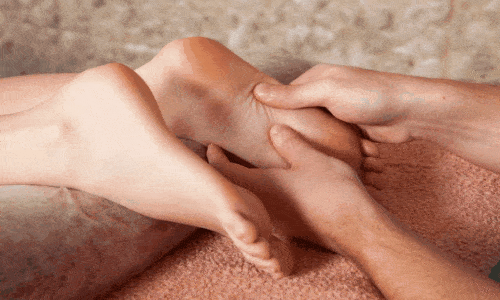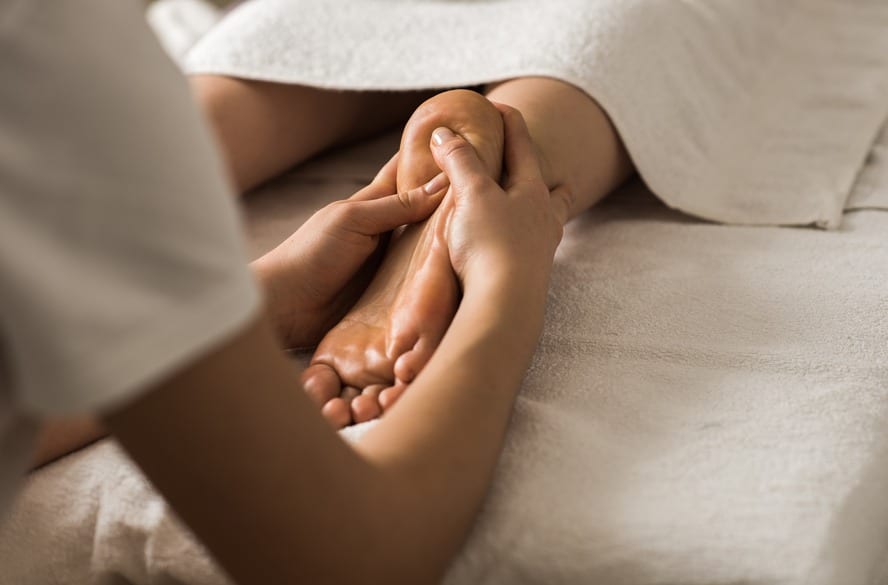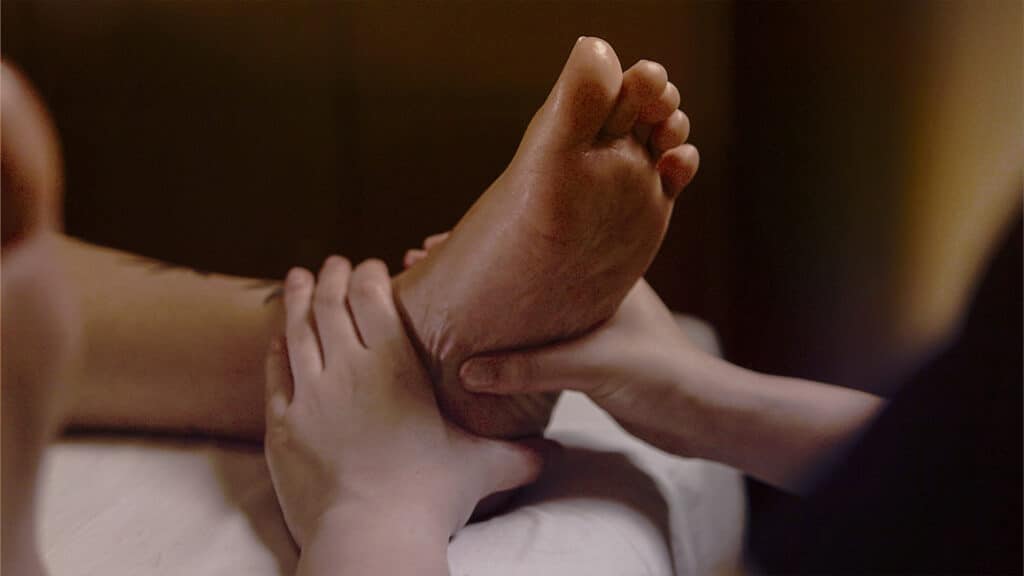Adverts
Foot discomfort can make even the simplest daily tasks a real challenge. Feelings of fatigue, pain, or even tension accumulated after hours of activity are common problems that directly affect well-being and quality of life. But this doesn't have to be a permanent reality.

With specific care and some simple practices, it is possible to relieve the strain on your feet, improve circulation and ensure lighter, healthier steps.
Adverts
In this content, you'll find valuable tips to combat fatigue and prevent discomfort, as well as understand how daily habits can make all the difference in the health of your feet. 🦶✨
From choosing the ideal footwear to relaxation techniques and skin care, here you'll discover solutions that work for both those who spend hours on their feet and those who endure long periods of sitting. If your feet need a break, this is the place to find the answers you're looking for.
Adverts
Ready to transform your relationship with your daily steps? Discover the most effective strategies to keep your feet refreshed and free from discomfort! 👣

How to understand and relieve tired feet: what you need to know
If you feel like your feet are constantly tired or uncomfortable, know that this isn't uncommon. After all, our feet are the foundation of our body and bear the brunt of our daily activities. Therefore, it's essential to understand what might be behind this sensation in order to better care for them. 😊
Main causes of tired and uncomfortable feet
Before discussing how to relieve tired feet, it's important to understand the possible causes of this discomfort. Here are some of the most common reasons:
- Use of inappropriate footwear: Shoes that are unsupportive or tight can impair circulation and cause pain.
- Standing for long periods: Professions that require standing, such as nursing and teaching, can put strain on the feet.
- Intense physical activities: Playing sports without proper preparation can cause muscle fatigue in the feet.
- Postural changes: Incorrect posture while walking or standing can increase pressure on your feet.
Understanding the cause of your fatigue is the first step to finding relief. Additionally, it's important to adopt preventative measures and simple treatments that help keep your feet healthy and comfortable.
When to seek professional help?
While foot discomfort can be alleviated with home remedies, some conditions warrant medical attention. Seek medical attention if:
Related articles:
- The pain is severe or persists for several days.
- There are signs of swelling or redness that do not go away.
- Wounds or calluses that do not heal appear.
Taking care of your feet is a loving gesture towards yourself, and seeking guidance from a professional, such as an orthopedist or podiatrist, can make all the difference in more complex cases.
—
Simple massages and exercises to revitalize your feet
One of the most effective ways to relieve tired feet is to invest in massages and exercises that stimulate blood circulation and relax muscles. These treatments can be done at home and offer quick and satisfactory results.
Homemade massage for tired feet
A good massage can be transformative for your feet! Here's an easy-to-follow step-by-step guide:
- Start with a foot bath: Fill a basin with warm water and add a few drops of essential oil, such as lavender or eucalyptus, and a handful of coarse salt.
- Use your hands or a massager: After the foot bath, dry your feet and apply moisturizer. Use your thumbs to make circular motions on the soles of your feet.
- Focus on tension points: Gently press on the arch and heel, which tend to accumulate the most tension.
This practice not only relieves fatigue but also helps reduce accumulated stress in the body. Try it at the end of a busy day and feel the difference!

Quick exercises to strengthen your feet
In addition to massages, simple exercises can help strengthen your foot muscles and prevent excessive fatigue. Here are some easy options:
- Stretch and bend your fingers: Sit comfortably and move your toes back and forth, as if you were “stretching” your muscles.
- Roll a ball: Use a tennis ball or roller to massage the sole of your foot. Simply roll the ball back and forth for 2 to 3 minutes.
- Standing on tiptoe: This exercise strengthens your calf muscles and improves balance. Rise up onto your toes, hold the position for 5 seconds, and then slowly lower back down.
These simple movements can be done at any time of day and are great for those who spend a lot of time standing or walking.
—
Daily foot care: habits that make a difference
Taking care of your feet shouldn't be a task only when you feel discomfort. Adopting a care routine can prevent problems and ensure lighter, healthier steps.
Choosing the right shoes
The shoes we wear have a direct impact on the health of our feet. Choosing the right style for your daily routine is essential:
- Prioritize comfort: Shoes with soft soles and anatomical insoles offer greater support and cushioning.
- Avoid high heels for long periods: Heels can put excessive pressure on the balls of your feet and heels.
- Choose the right size: Shoes that are too tight or too loose can cause blisters, calluses, and even postural problems.
If necessary, invest in orthopedic insoles or specific shoes recommended by a specialist.
Hydration and skin care
The skin on your feet is naturally drier than other parts of your body, which requires special attention:
- Hydrate daily: Use specific foot creams, preferably those containing urea or shea butter.
- Avoid excessive dryness: After bathing, dry thoroughly between your toes to prevent fungus and diaper rash.
- Do weekly exfoliations: This helps remove dead cells and keep skin soft.
These simple steps promote healthy skin and help prevent problems like cracks or infections.
—
Take breaks and postures for healthier feet
Often, small adjustments to our routine can have a big impact on foot health. Knowing when and how to take breaks throughout the day is essential.
Incorporate strategic breaks into your routine
If your job requires long periods of standing or walking, try to include short rest breaks. Some suggestions include:
- Alternate between standing and sitting: Whenever possible, sit for a few minutes to reduce pressure on your feet.
- Elevate your feet during breaks: Place them on an elevated support to help with circulation.
- Avoid standing in the same position: Move lightly to stimulate blood flow.
These breaks, although brief, are extremely effective in relieving strain on the feet and legs.
Maintain good posture
Paying attention to your posture when walking or standing also makes all the difference to your foot health. Here are some tips:
- Distribute the weight evenly: Avoid supporting all your weight on just one foot.
- Align the body: Make sure your shoulders are relaxed and your spine is straight.
- Choose suitable surfaces: Avoid walking barefoot on very hard or uneven floors.
These postural precautions help reduce the impact on your feet and prevent long-term pain.
—
How sleep and diet influence foot health
Last but not least, it's important to remember that our feet also benefit from a good night's sleep and a balanced diet. These factors directly impact blood circulation and muscle recovery.

The role of sleep in resting your feet
During sleep, our bodies work on muscle regeneration and fluid balance. To ensure your feet are ready for a new day, invest in quality sleep. Some helpful tips include:
- Elevate your feet while sleeping: Using a pillow under your feet can improve circulation.
- Sleep 7 to 9 hours a night: Adequate rest is essential for the overall health of your body, including your feet.
Nutrition and hydration for healthy feet
A balanced diet and fluid intake play an important role in foot health:
- Include foods rich in potassium: Bananas, potatoes, and spinach help prevent foot cramps.
- Stay hydrated: Dehydration can affect skin elasticity and cause discomfort.
- Consume proteins and vitamins: They help with muscle recovery and tissue health.
Take care of your body from the inside out and see how it affects the well-being of your feet. 💛
Conclusion
Conclusion: Take Care of Your Feet and Transform Your Days! 👣
Taking care of your feet isn't just about comfort, it's also about health and well-being. By implementing the tips we've shared, such as simple stretches, choosing appropriate footwear, and relaxation practices, you can significantly reduce the discomfort and fatigue that often affect your daily life. After all, well-cared-for feet result in lighter steps and a more productive routine. 🚶♀️
Furthermore, adopting these habits is an important step in preventing future problems, such as chronic pain, calluses, and even posture problems. So, invest in small changes today to reap big benefits tomorrow. 🕒 Don't forget to prioritize self-care and listen to your body's needs—it always gives you signals when something isn't right. 🌟
Finally, remember: healthy feet are the foundation of an active and balanced life. Now that you know these practical and foolproof tips, how about putting them into practice today? Your feet and your quality of life will thank you! 😊
Transform your steps and feel the difference – you deserve it! 👟



